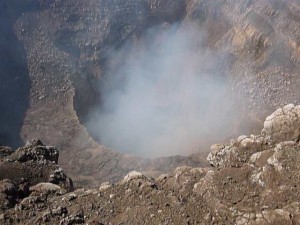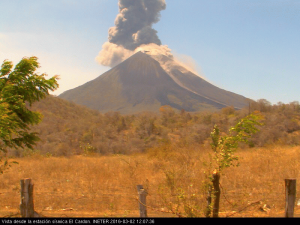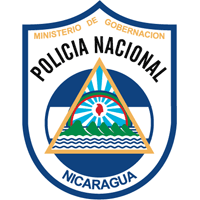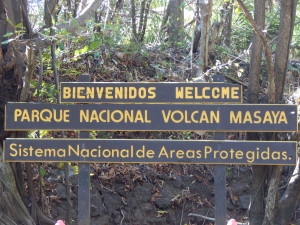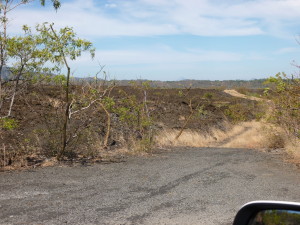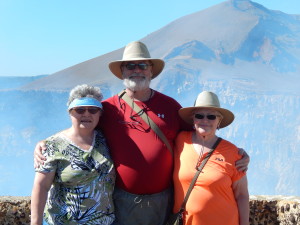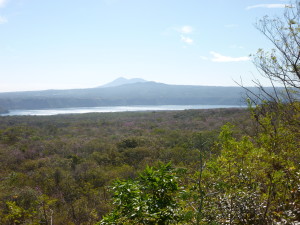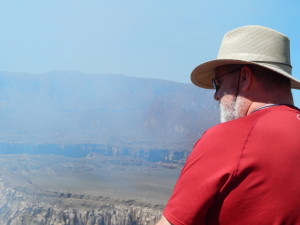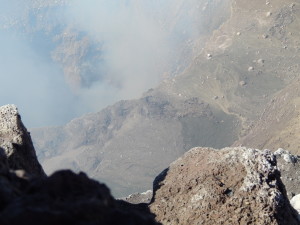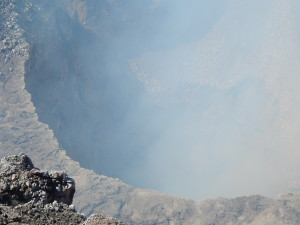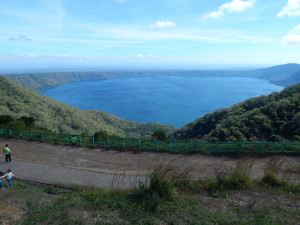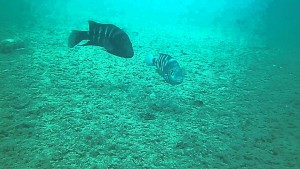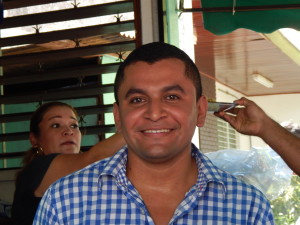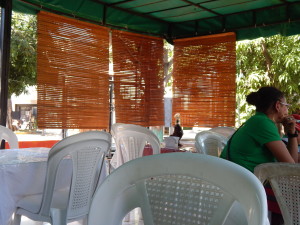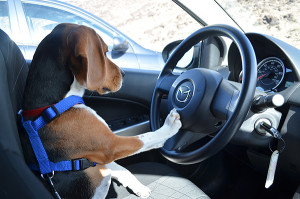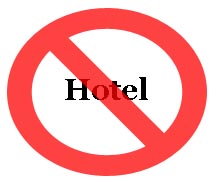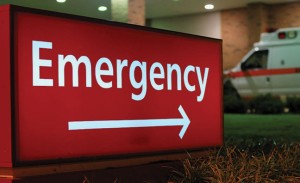 It was an “unexpected journey” that Bilbo would have been proud of, except there was no party the night before, no wizard to guide us, and no dragon horde of treasure awaiting us at the end. But one similarity to “The Hobbit” was the frightening prospect of having to go to the Emergency Room in a third-world country. Fire-breathing dragons seemed tame by comparison. Yet, unlike Bilbo, we were prepared and confident…mostly.
It was an “unexpected journey” that Bilbo would have been proud of, except there was no party the night before, no wizard to guide us, and no dragon horde of treasure awaiting us at the end. But one similarity to “The Hobbit” was the frightening prospect of having to go to the Emergency Room in a third-world country. Fire-breathing dragons seemed tame by comparison. Yet, unlike Bilbo, we were prepared and confident…mostly.
Prior to our leaving the USA, we talked to our doctors and other healthcare providers about healthcare in the third world. Predictably, each provider would frown with a shake of the head and warn us that healthcare in other countries was not good. Each would rail about how poorly trained the doctors and nurses were, how there was little quality control, how conditions were not sanitary, don’t drink the water, don’t eat the food, “it’s cheaper for a reason.” In short, each implied the only place to get first-rate care was in the USA. Depressing news, but not bad enough to keep us from our adventure.
As precautions, however, we contacted our health insurance and got a “vacation override” for our maintenance prescription drugs so we would have sufficient supply for the duration of our trip (we needed more than the standard 90-day supply). We translated our lists of meds, including dosages, into Spanish along with a Spanish explanation of the thankfully few health issues we have that might require care. We wanted to be prepared for the possibility that no one would speak English when we needed it most or understand our limited Spanish. Recognizing that medical facilities, just like those in the USA, can fall into “the good, the bad, and the ugly” categories, we researched the best and worst hospitals in Managua. Upon our arrival, we located the nearest hospital with the best local reputation … just in case. In short, we did our research and prepared for any worst-case scenarios related to any medical issues or complications that could be anticipated. All information was carefully converted to Spanish PDF documents and then stored on both of our smartphones, which we always have with us, so the information would be readily available should we need it. We then promptly breathed a sigh of relief, knowing we were as prepared as we could be for all contingencies. Almost.
We love having visitors when we travel and Nicaragua is no exception. Sharing our experiences with family and friends brightens the trip and gives us a chance to broaden their horizons as we broaden ours. So far, my cousin (and my wife’s best friend from childhood) along with our good friends from Maryland visited us in Nicaragua. Usually, things go smoothly. On this trip, however, not so much. We shared more experiences than we intended. In addition to sharing old Colonial towns, smoking volcanoes, stunning Pacific Ocean vistas, we also managed to get two out of three of our guests sick with some version of bacterial food poisoning. For the most part, the bouts were the garden variety of “Oh, I don’t feel so good” food poisoning. The antibiotic Cipro, plus lots of water and rest, took care of the problem.
But my poor cousin, who shall remain nameless to protect her pride and privacy, had it the worst. She didn’t have the “garden variety,” but rather the nuclear explosion variety that emanates from every possible orifice known to humankind. The outcome (and I use that term loosely–no pun intended) was rather spectacular. The mushroom cloud could be seen for miles. After a night of ejecting things she ate back in high school, she looked miserable, felt dreadful, and was severely dehydrated. She couldn’t even keep the anti-nausea medication down. The only thing the nearby Masaya Volcano eruptions had over her was the smoke–and I can’t say with certainty that there wasn’t any. It became clear that if she was ever to see the USA again in this life, we needed to get her to the ER at the local hospital.
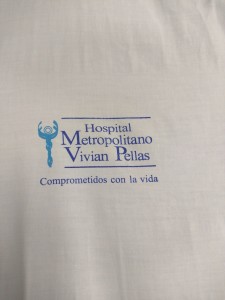 As luck would have it, the closest hospital to our hotel is also the best in Managua, so off we went, patient in tow, to experience Emergency Room care in the third world (every gringo’s private nightmare). We pulled up to the Emergency Room entrance but she was too weak to get out of the car. The security guard ran in to get someone from the ER with a gurney, and my cousin was quickly wheeled into the ER. After a brief explanation, with my wife doing what translating she could while I parked the car, a doctor was summoned who spoke some English. An IV was immediately started to replace fluids and blood was drawn for testing along with other “samples.” Within an hour, the results came back as a “food-borne intestinal infection,” and an internist was called in who also spoke English. Antibiotics were prescribed and administered via IV, but it became apparent that she was not recovering quickly enough, so the decision was made to admit her for observation overnight.
As luck would have it, the closest hospital to our hotel is also the best in Managua, so off we went, patient in tow, to experience Emergency Room care in the third world (every gringo’s private nightmare). We pulled up to the Emergency Room entrance but she was too weak to get out of the car. The security guard ran in to get someone from the ER with a gurney, and my cousin was quickly wheeled into the ER. After a brief explanation, with my wife doing what translating she could while I parked the car, a doctor was summoned who spoke some English. An IV was immediately started to replace fluids and blood was drawn for testing along with other “samples.” Within an hour, the results came back as a “food-borne intestinal infection,” and an internist was called in who also spoke English. Antibiotics were prescribed and administered via IV, but it became apparent that she was not recovering quickly enough, so the decision was made to admit her for observation overnight.
The hospital brought in an interpreter to make sure we understood what was going on with both her care and, of course, the billing. In most cases, Medicare does not provide coverage outside of the USA, and the hospital did not work with my cousin’s supplemental insurance. Her supplemental insurance reimbursed her for the costs when she got home. The forms I signed (on her behalf) were in English and perfectly clear.
I have to say that the gloom and doom portrayed by our USA healthcare providers couldn’t have been further from reality. The care was first rate; the facilities were as modern and up-to-date as any I’ve seen in the USA. The ER equipment looked no different than anything I would expect to see back home. The lab results were back quicker than you could say, “Are the lab results back?” We did not wait forever for anything. The hospital was efficient and absolutely spotless including the public restrooms (my personal litmus test for cleanliness). Each time my cousin would use the bathroom, amazingly, someone would go in and clean and disinfect it. In the morning a staff person came into her room and cleaned and disinfected every single surface and thing in the room–bed, mattress, floors, walls, chairs, everything was wiped down and disinfected. My cousin was in awe at how thorough they were. There were more people with mops in the hallways and public areas than there were cops outside trying to give me a ticket.
Nicaragua may be a poor third-world country economically, but the care we witnessed at the Hospital Metropolitano Vivian Pellas was first-rate. I don’t wish a hospital stay on anyone, but if I had to go myself, I wouldn’t hesitate for a second to go to this hospital. And the total bill for the emergency room care and the overnight stay in a private room, including all medications and doctor fees, was just $1,407.55. That amount in the USA wouldn’t have covered the hospital meals, and the care would have been no better.
My cousin was back with us the next day and ready to go right back into the dragon’s lair — the wonderful world of potential food-borne illness known as “restaurantes.” Her first question was, “What’s for dinner?”
 As I sit near the Park Cafe on the indoor pool deck aboard Grandeur of the Seas, I can’t help but overhear conversations. It mystifies me why the topic of conversation among geezers is always about health problems: Medicare, what medicines they take, hip replacements, knee replacements, aches, pains. The conversations are downright depressing. This cruise is almost all geezers and it seems unnatural to me. There are no young people aboard; no children. It’s God’s waiting room on the water.
As I sit near the Park Cafe on the indoor pool deck aboard Grandeur of the Seas, I can’t help but overhear conversations. It mystifies me why the topic of conversation among geezers is always about health problems: Medicare, what medicines they take, hip replacements, knee replacements, aches, pains. The conversations are downright depressing. This cruise is almost all geezers and it seems unnatural to me. There are no young people aboard; no children. It’s God’s waiting room on the water.

